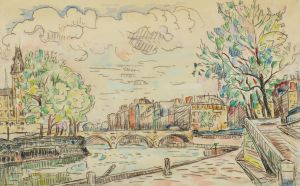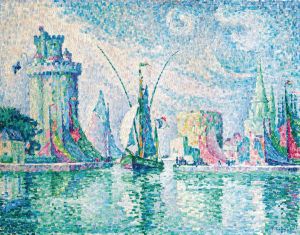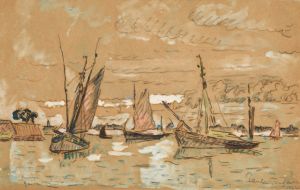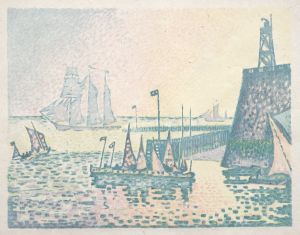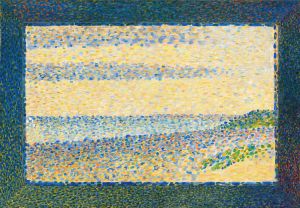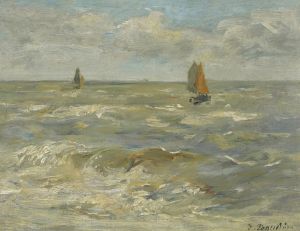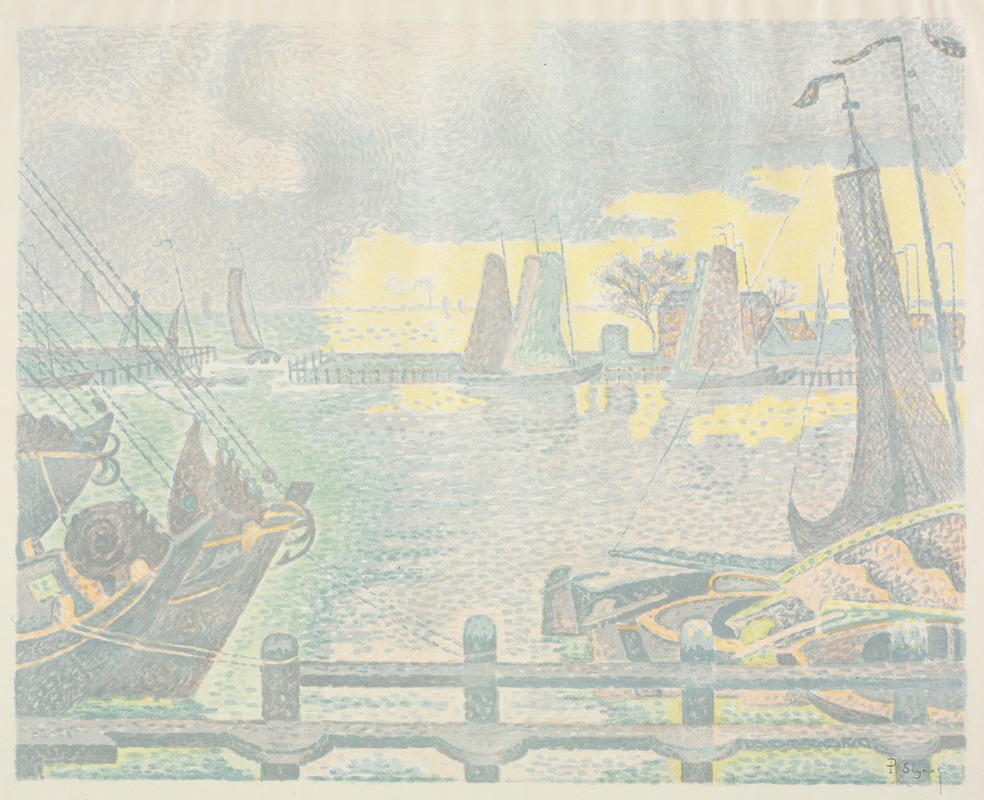
Boats at Flushing
A hand-painted replica of Paul Signac’s masterpiece Boats at Flushing, meticulously crafted by professional artists to capture the true essence of the original. Each piece is created with museum-quality canvas and rare mineral pigments, carefully painted by experienced artists with delicate brushstrokes and rich, layered colors to perfectly recreate the texture of the original artwork. Unlike machine-printed reproductions, this hand-painted version brings the painting to life, infused with the artist’s emotions and skill in every stroke. Whether for personal collection or home decoration, it instantly elevates the artistic atmosphere of any space.
"Boats at Flushing" is a painting by the French artist Paul Signac, created in 1906. Signac was a prominent figure in the Neo-Impressionist movement, which is characterized by the use of pointillism—a technique involving the application of small, distinct dots of color to form an image. This method was developed by Georges Seurat, with whom Signac closely collaborated and shared artistic philosophies.
The painting depicts a serene maritime scene in the Dutch town of Flushing (Vlissingen), located in the province of Zeeland. The composition features several boats anchored in the harbor, with their masts and sails prominently displayed. The water reflects the boats and the sky, creating a harmonious and tranquil atmosphere. Signac's use of vibrant colors and meticulous dot application captures the light and movement of the scene, demonstrating his mastery of the pointillist technique.
Signac's interest in maritime subjects was a recurring theme throughout his career. He was an avid sailor and often depicted ports, harbors, and coastal landscapes in his works. "Boats at Flushing" is a testament to his fascination with the sea and his ability to convey the beauty and tranquility of nautical environments.
The painting is notable for its use of color and light. Signac's palette includes a range of blues, greens, and yellows, which he used to create a sense of depth and luminosity. The careful placement of each dot of color allows the viewer's eye to blend the hues optically, resulting in a vibrant and dynamic image. This technique not only enhances the visual impact of the painting but also reflects Signac's scientific approach to color theory and his interest in the optical effects of light.
"Boats at Flushing" is part of a larger body of work that Signac produced during his travels in Europe. His journeys to various coastal towns and cities provided him with a wealth of inspiration and allowed him to explore different aspects of maritime life. This painting, like many of his other works, captures a specific moment in time and place, offering a glimpse into the everyday life of a bustling harbor.
Today, "Boats at Flushing" is held in the collection of the Musée d'Orsay in Paris, France. The museum is renowned for its extensive collection of Impressionist and Post-Impressionist masterpieces, and Signac's work is an important part of this collection. The painting is appreciated not only for its aesthetic qualities but also for its historical significance as an example of Neo-Impressionist art.
Paul Signac's "Boats at Flushing" remains a celebrated piece within the art world, admired for its technical precision, vibrant color palette, and serene depiction of a maritime scene. It continues to be studied and appreciated by art historians, scholars, and enthusiasts alike, serving as a testament to Signac's enduring legacy in the world of art.





